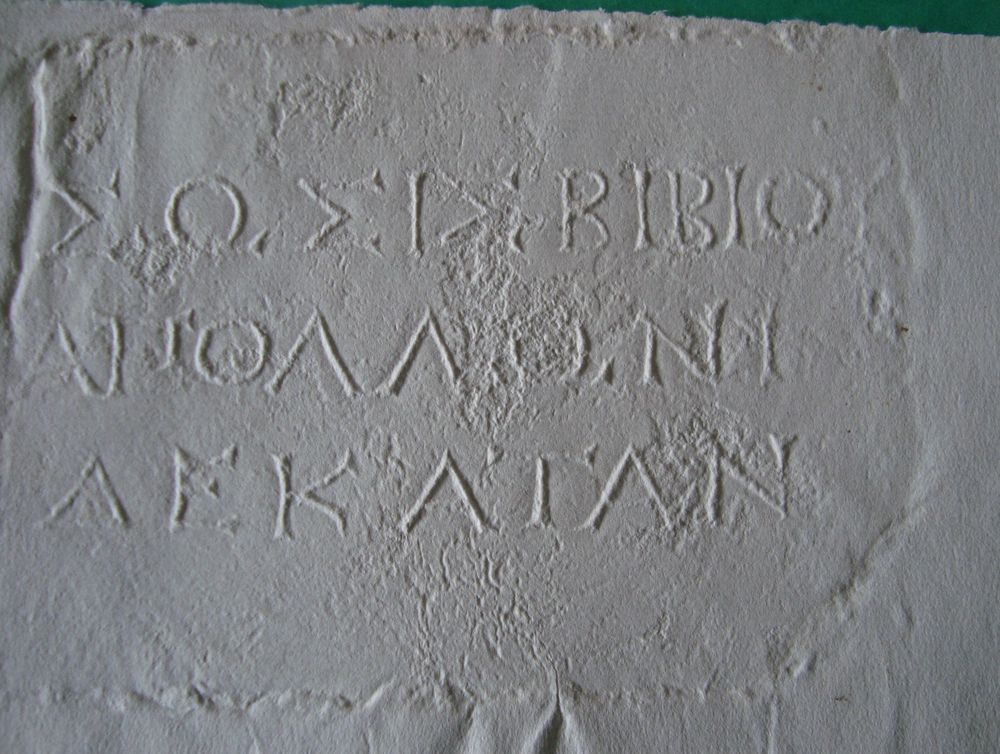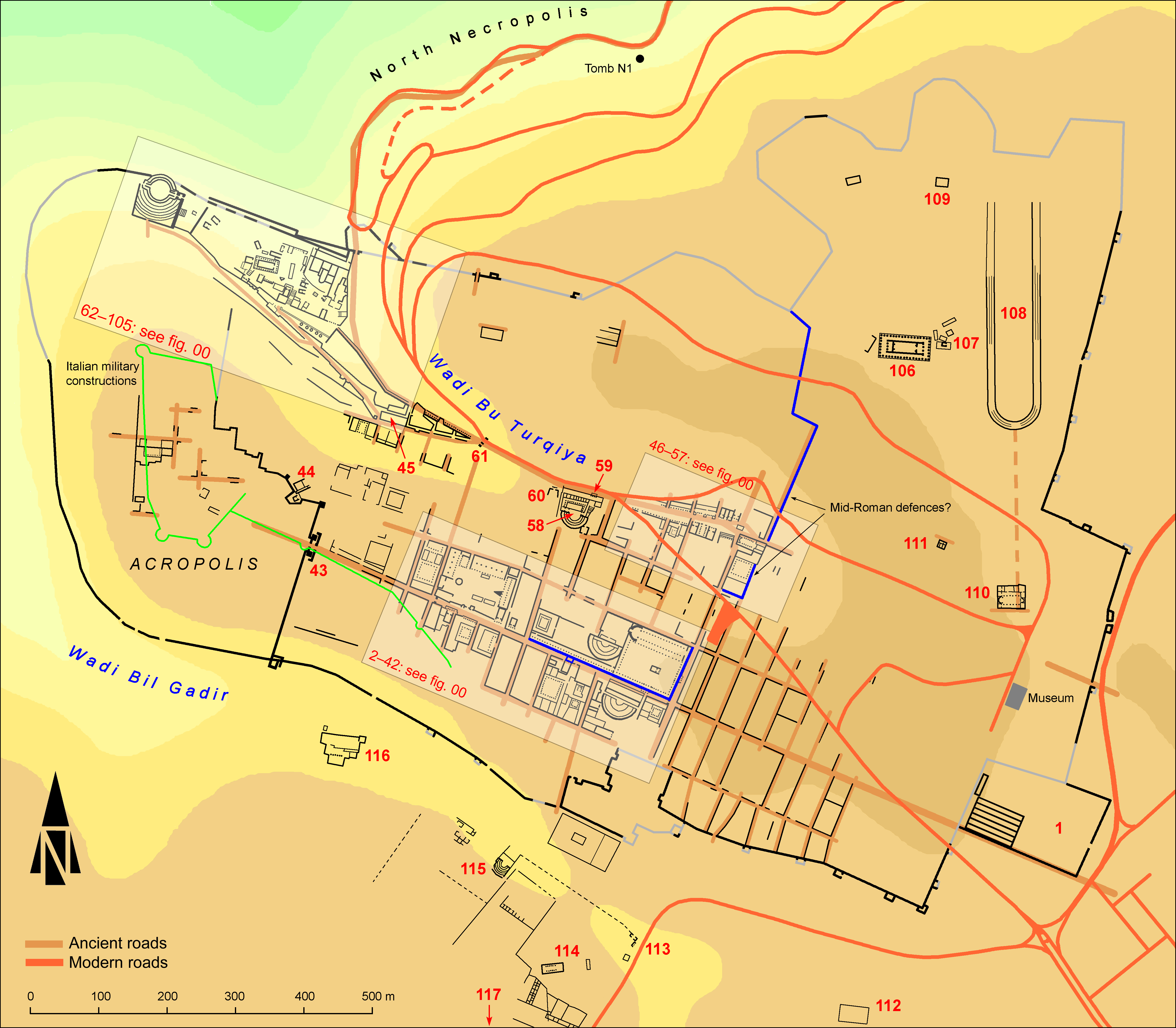EpiDoc XML:
IGCyr1371002
Trismegistos ID:
997633
Source description
Support: A small rectangular white marble panel (w: 0.137 × h: 0.097 × d: 0.04).
Layout: Inscribed on the face in three lines with axial display.
Letters: Carefully cut letters (0.011) with very small serifs; pi with protruding upper bar, non-slanting sigma, horse-shoe omega.
Date: Probably second century BC (lettering).
Findspot: Plausibly found before World War II at Cyrene ➚: exact findspot not registered.
Place of origin: Findspot.
Last recorded location: Cyrene Museum, 170. Seen in 1979 by Dobias-Lalou in Shahat: Cyrene Museum.
Text constituted from: Transcription from stone (CDL).
Bibliography
Never published before this edition.
Text
French translation
Sosis fils de Bibios (ou Bibias?) (scil. a consacré) à Apollon au titre de la dîme.
English translation
Sosis son of Bibios (or Bibias?) (scil. dedicated) to Apollo as a tithe.
Italian translation
Sosis figlio di Bibios (o Bibias?) (scil. ha dedicato) ad Apollo come decima.
Commentary
This small inscription, well preserved, belongs to the large series of dedications of the tithe. The name Sosis is common in Cyrenaica. The father's name Bibios (or perhaps Bibias with a non-dialectal ending) has no parallel in Cyrenaica, whereas a name with a similar stem is attested with few instances in various regions and at different dates. Some late instances in places where Roman influence is established are interpreted as Vibius with initial Greek B for Latin V. However, the lettering of this inscription clearly antidates the Roman presence in Cyrenaica, a time when dedications of a tithe are no longer attested. Looking for a Greek origin, we find only two connected names, both rather obscure, Βίβακος at Segesta and Βιβώ in Macedonia. In this inscription, as a father's name it has a genitive case in koine and not in the local dialect. This might be a hint of external influence inside the very typical formulation of the rest of the inscription.
Alternatively, a stem BIB may be found in several inscriptions from Tripolitania, written either in Latin or in Phenico-punic. The whole question is studied elsewhere, the Libyan track being perhaps preferable (see Dobias-Lalou 2024).
CC BY-NC-SA 4.0 Deed Attribution-NonCommercial-ShareAlike 4.0 International License.
All citation, reuse or distribution of this work must contain a link back to DOI: https://doi.org/10.60760/unibo/igcyrgvcyr2 and the filename (IGCyr000000 or GVCyr000), as well as the year of consultation.


